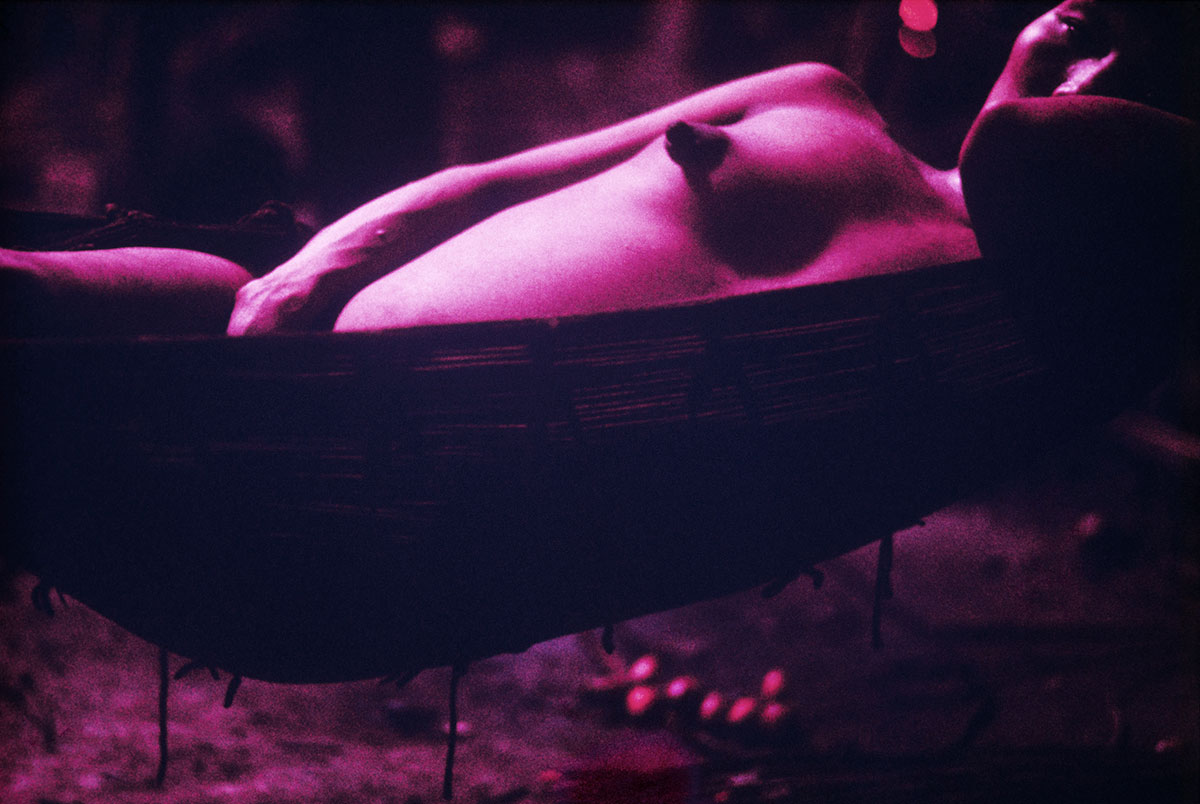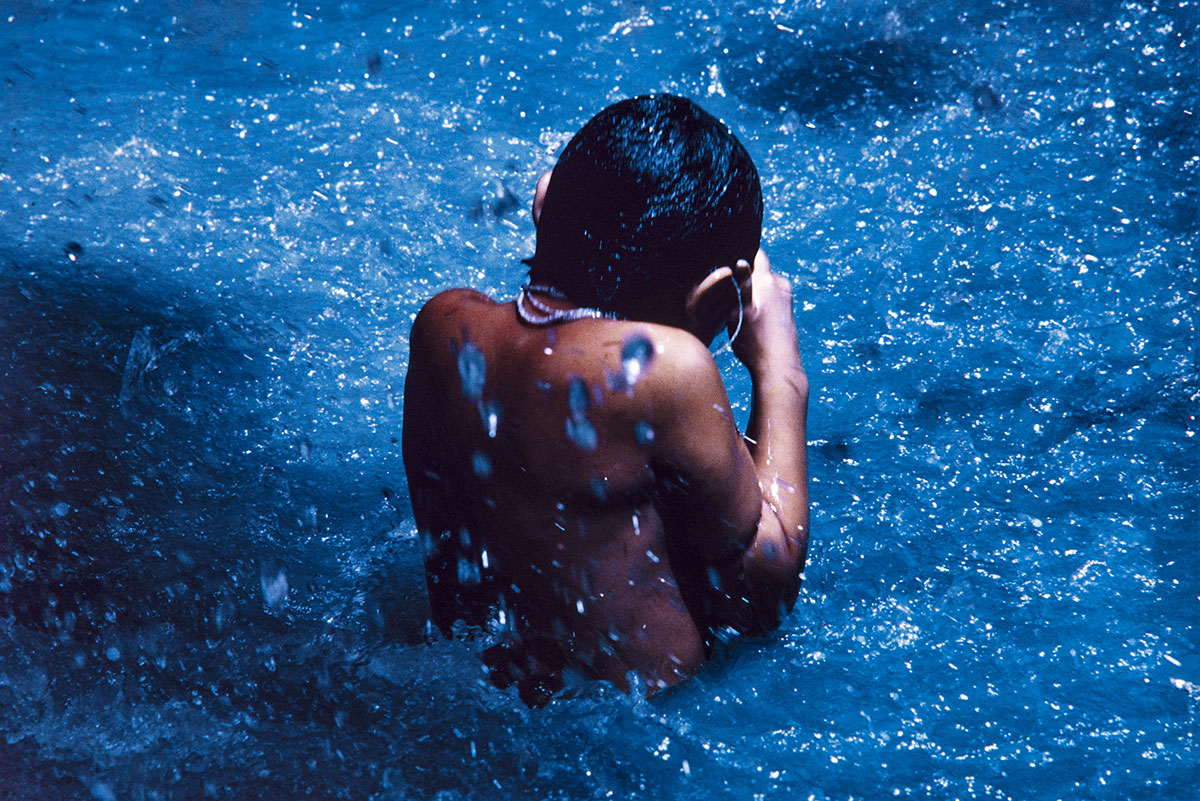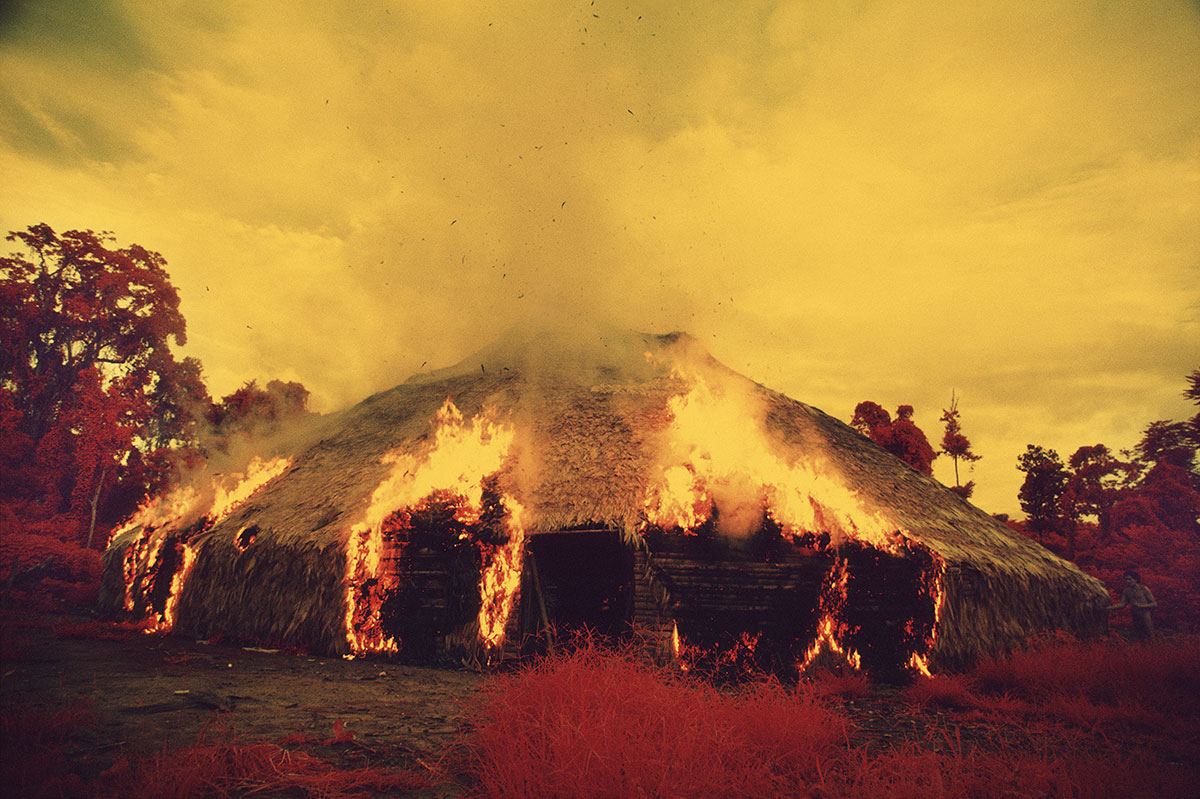PHOTO:Claudia Andujar
 The daughter of a Jewish man murdered in the Nazi camps, photographer Claudia Andujar has become a witness to the near-extermination of a people and, on the border between Venezuela and Brazil, made another people’s acknowledgement and survival her mission. It’s possible that, without intervention from this photographer, who was born in Switzerland and raised in Hungary and emigrated to Brazil in 1955, members of the Yanomami ethnic group would have no voice or dignity to fight for their rights, which have recently come under threat once again.
The daughter of a Jewish man murdered in the Nazi camps, photographer Claudia Andujar has become a witness to the near-extermination of a people and, on the border between Venezuela and Brazil, made another people’s acknowledgement and survival her mission. It’s possible that, without intervention from this photographer, who was born in Switzerland and raised in Hungary and emigrated to Brazil in 1955, members of the Yanomami ethnic group would have no voice or dignity to fight for their rights, which have recently come under threat once again.
By Efi Michalarou
Photo: Fundación MAPFRE Archive
“Claudia Andujar” is the first major retrospective dedicated to the work of the Brazilian artist to travel Europe. Claudia Andujar began her photo-journalistic path moved by her interest in human vulnerability. A large portion of her work has focused on the defense and protection of the rights of the Yanomami community, one of the largest indigenous groups in Brazil. The exhibition explores Claudia Andujar’s extraordinary contribution to the art of photography as well as her major role as a human rights activist in the defense of the Yanomami. Claudia Andujar was born in Neuchâtel, Switzerland, in 1931 and currently lives and works in São Paulo. She grew up in Transylvania, which at the time had recently been incorporated to Romania after years of Hungarian domination. During WWII, Claudia’s father, a Hungarian Jew, was deported to Dachau where he was killed along with most of her paternal relatives. Claudia Andujar fled with her mother to Switzlerand, immigrated first to the United States in 1946, then to Brazil in 1955 where she began a career as a photojournalist. Claudia Andujar first met the Yanomami in 1971 while working on an article about the Amazon for “Realidade” magazine. Fascinated by the culture of this isolated community, she decided to embark on an in-depth photographic essay on their daily life after receiving a Guggenheim fellowship to support the project. From the very beginning, her approach differed greatly from the straightforward documentary style of her contemporaries. The photographs she made during this period show how she experimented with a variety of photographic techniques in an attempt to visually translate the shamanic culture of the Yanomami. Applying Vaseline to the lens of her camera, using flash devices, oil lamps, and infrared film, she created visual distortions, streaks of light, and saturated colors, imbuing her images with a feeling of the otherworldly. Claudia Andujar also developed a series of sober black- and-white portraits that capture the grace and dignity of the Yanomami. Focusing closely on faces and body fragments, she tightly frames her images, using a dramatic chiaroscuro to create a feeling of intimacy and draw attention to individual psychological states. Alongside the many photographs taken during this period, the exhibition will also present a selection of Yanomami drawings. After years photographing the Yanomami herself, Claudia Andujar felt it was important to provide them with the opportunity to represent their own conceptions of nature and the universe. She thus initiated a drawing project, equipping members of the community with markers and paper. A selection of these drawings representing Yanomami myths, rituals, and shamanic visions are presented in the exhibition. By the late 1970s, Claudia Andujar had reached a turning point in her career. The construction of a transcontinental highway in the Amazon, initiated by Brazil’s military government, opened up the region to deforestation as well as invasive agricultural programs, bringing epidemics to the Yanomami and leading to the annihilation of entire communities. This situation reminded her of the genocide in Europe, and its impact on her was such that she decided to deepen her commitment to the Yanomami struggle. In 1978 she founded, with the missionary Carlo Zacquini and the anthropologist Bruce Albert, the Commissão Pro-Yanomani (CCPY) and began a fourteen-year-long campaign to designate their homeland. At this point in her career photography, she put her artistic project aside and used photography primarily as a means to raise awareness and support her cause. In the early 1980s, Claudia Andujar took a series of black-and-white portraits of the Yanomami as part of a vaccination campaign. They are wearing numbered labels to help identify them for their medical records. The artist was struck by how these labels recalled the numerical tattoos of those ‘branded for death’ during the Holocaust. She later revisited these portraits and created the Marcados series, which reveal the ambiguity inherent in this act of labelling even if it is ultimately for their survival. In 1989, in response to the decrees signed by the Brazilian government aiming to demarcate Yanomami territory into nineteen separate and disjointed areas, Claudia Andujar created “Genocídio do Yanomami: morte do Brasil”, an audiovisual installation depicting the catastrophic impact of Western civilization on their world. Following the fourteen year-long tireless struggle Andujar led alongside Carlo Zacquini, Bruce Albert and Davi Kopenawa, shaman and spokesperson of the Yanomami Indians, the Brazilian government finally agreed to legally recognize Yanomami territory. Now eighty-eight years of age, Claudia Andujar continues to exhibit her work and raise public awareness of the Yanomami cause. Brazilian government agreed to legally demarcate Yanomami territory. Recognized on the eve of the UN Conference on Environment and Development, this territory is still threatened by illegal mining and logging. The work of Claudia Andujar provides both an unparalleled glimpse into the complex cosmological worldview of the Yanomami and a powerful political indictment of the violence perpetrated against them. The explosive force of her photography remains relevant today in view of the renewed threats facing the Yanomami and the Amazon basin.
Photo: Claudia Andujar, The young Susi Korihana thëri swimming, infrared film, Catrimani, Roraima, 1972–74, © Claudia Andujar, Courtesy the artist and Fundación MAPFRE
Info: Fundación MAPFRE, KBr Fundación MAPFRE Photography Centre, Avenida del Litoral 30, Barcelona, Duration: 26/2-23/5/2021, Days & Hours: Tue-Sni 11:00-20:00, https://kbr.fundacionmapfre.org
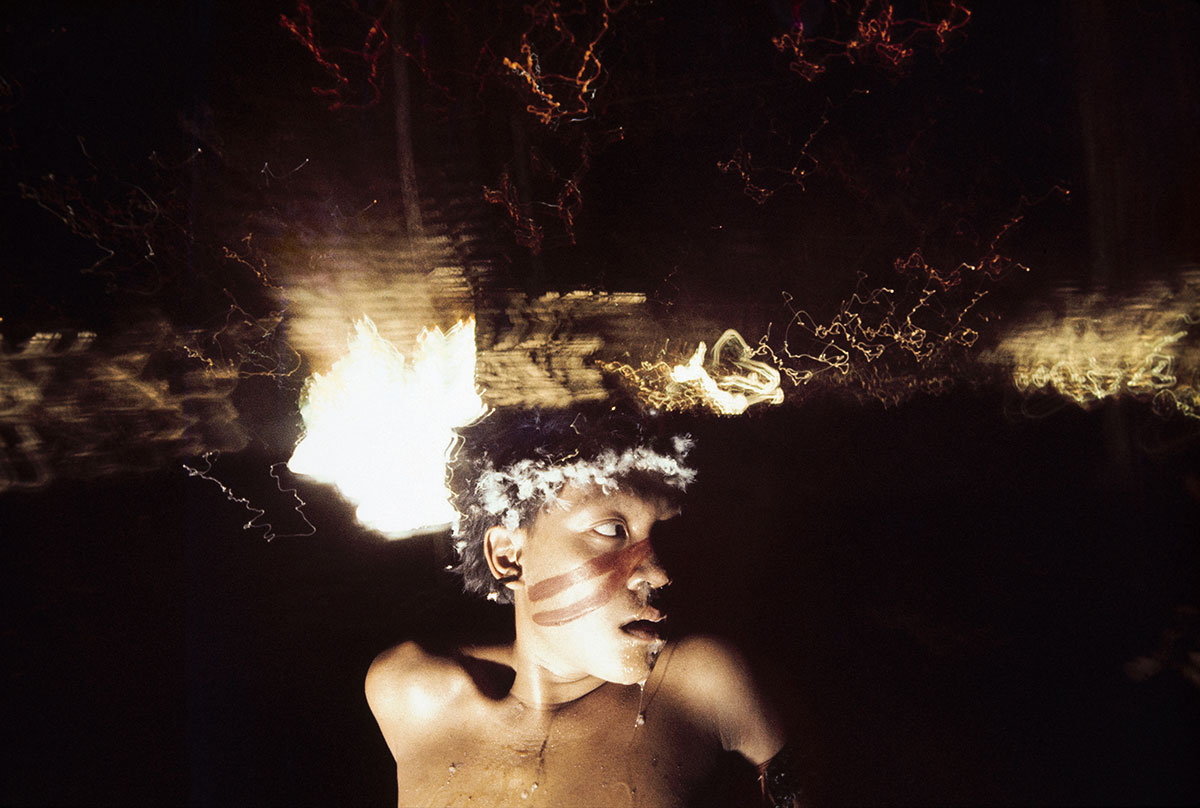
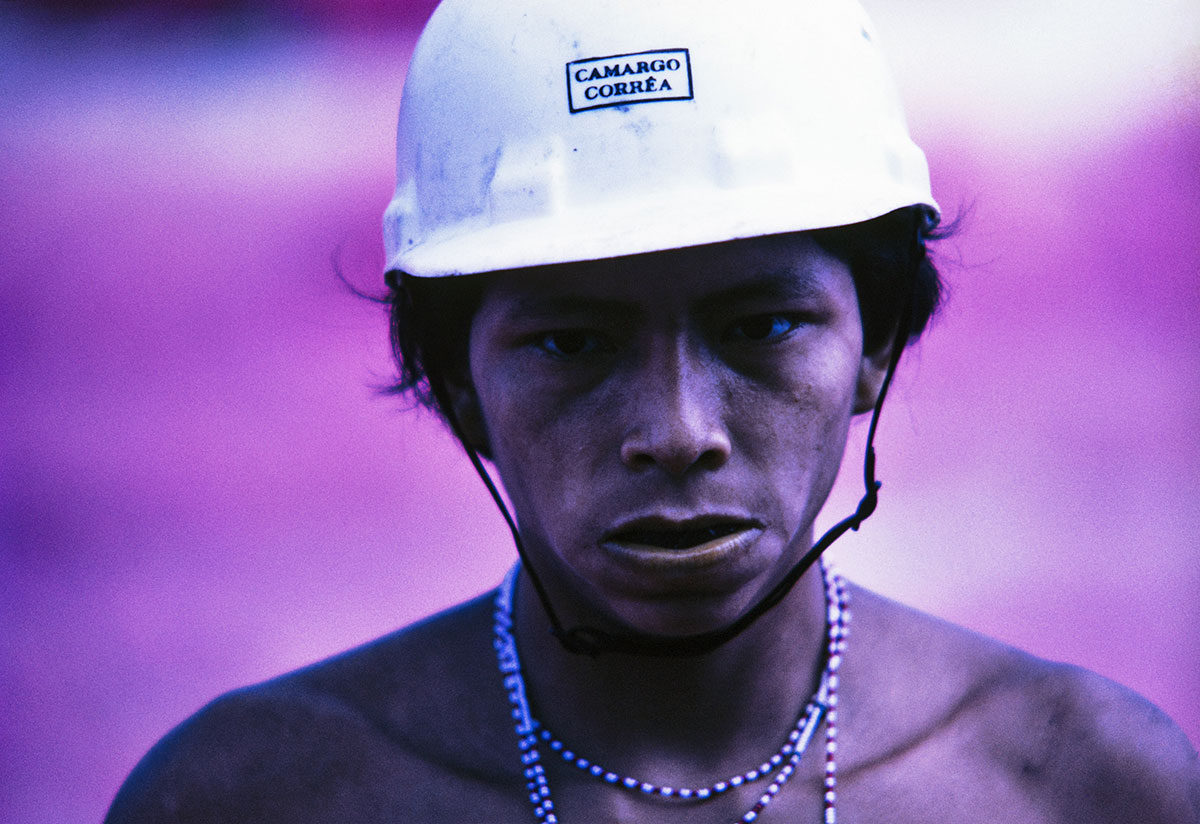
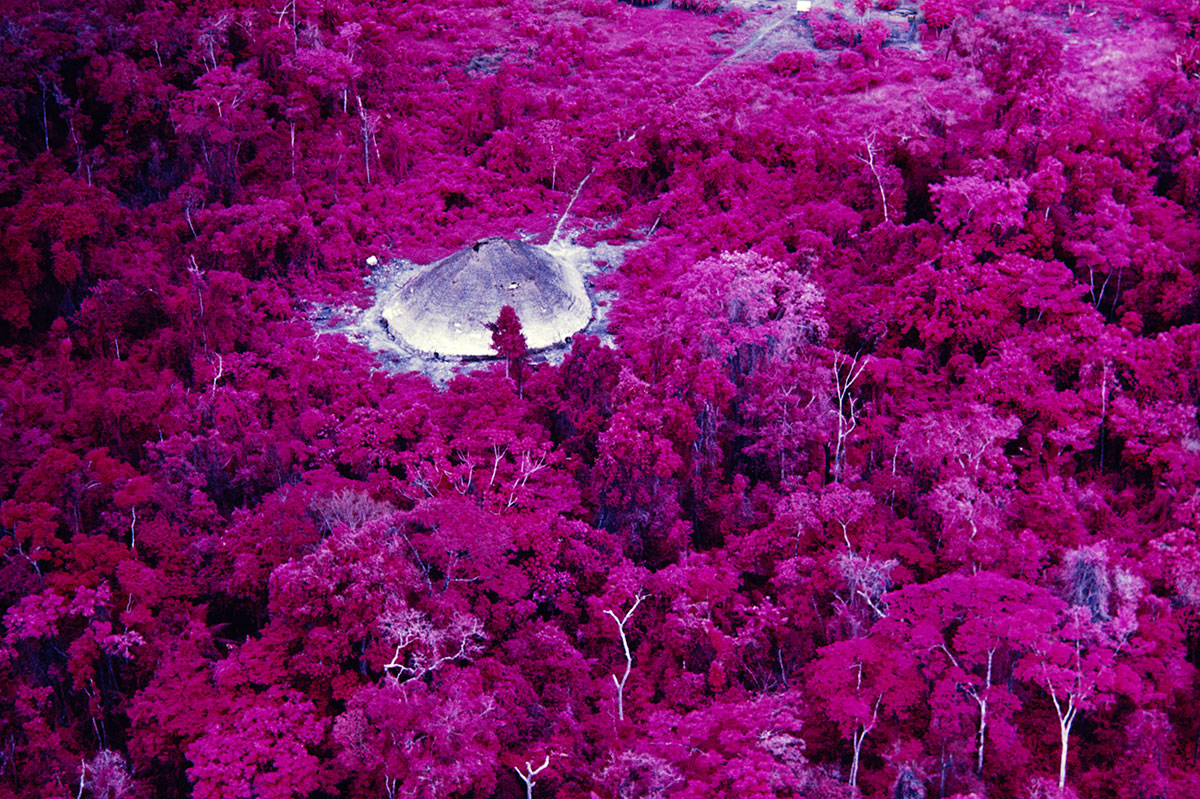
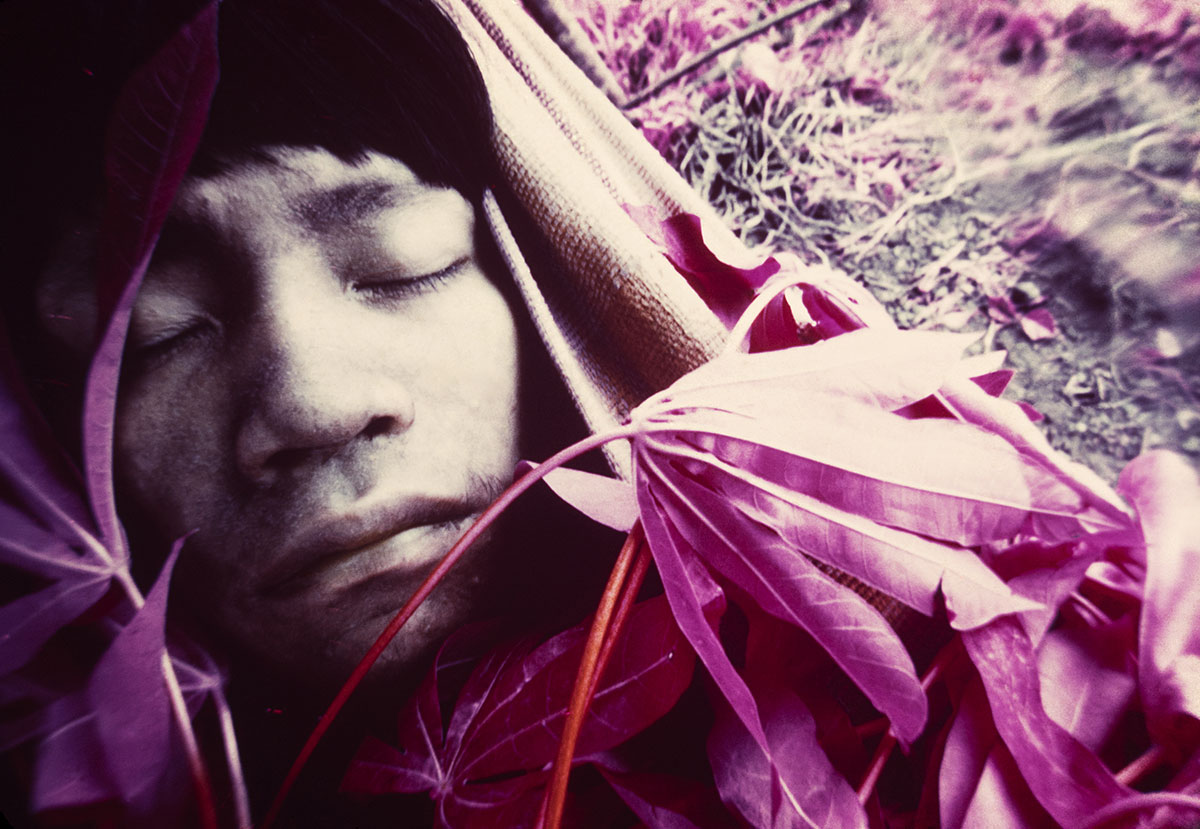
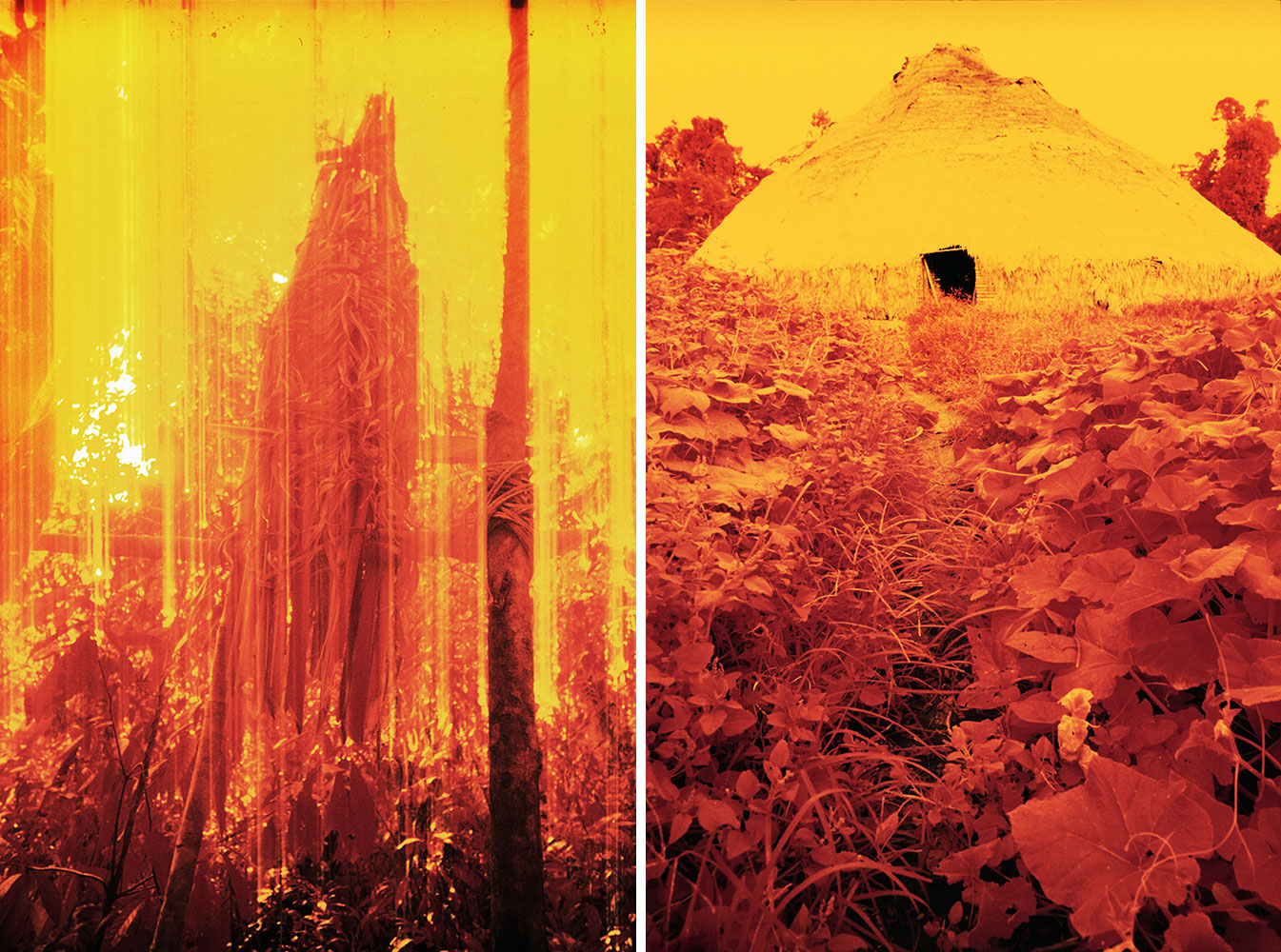
Right: Claudia Andujar, Collective house surrounded by sweet-potato leaves, infrared film, Catrimani, Roraima, 1976, © Claudia Andujar, courtesy the artist and Fundación MAPFRE
